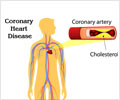
However, those findings stimulated the development of several regional STEMI systems in Minnesota, including the Level 1 Heart Attack Network created by the Minneapolis Heart Institute. "At this point, almost every hospital in the state belongs to a STEMI network due to their proliferation after 2003," Henry noted.
To compare performance since the 2003 survey results, the researchers mailed the identical survey to emergency department medical directors and nurse managers at all 108 Minnesota hospitals without cardiac catheterization labs in late 2009.
Since 2003, implementation of STEMI guidelines, protocols and standing orders in Minnesota community hospitals without cardiac catheterization labs has "dramatically improved," Henry noted, as more than 90 percent of hospitals have specific STEMI protocols. "These hospitals don't just have general protocols, but we found that they have very specific detailed protocols about medications, when to transfer these patients and what type of reperfusion therapy to use."
Compared with 2003 when 6 percent of these hospitals had protocol-specific indications for transfer to a tertiary hospital, 72 percent of hospitals now have adopted these indications. Also, 66 percent of hospitals have a formal quality improvement process for STEMI patients.
Finally, 91 percent of STEMI patients routinely transferred to a percutaneous coronary intervention (PCI) center, which also is mandated by the guidelines, compared with 59 percent in 2003.
Advertisement
"This improvement was stimulated by regional STEMI systems which support the recent class I recommendation for STEMI systems of care in the 2009 focused update of the ACC/AHA guidelines," according to the study authors.
Advertisement














